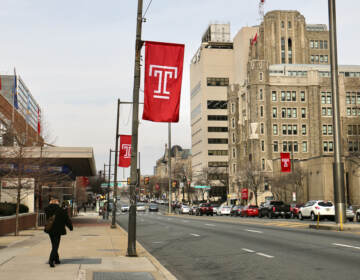Where did all the stars go?
Late one evening in October 1957, well after I had gone to bed and fallen asleep, my father woke me up and told me to get dressed because we were going outside. I was nine years old and really didn’t want to get out of my nice warm bed. But when he told me the reason I jumped up, threw my clothes on and dashed out the door.
Dad had heard on the news that Sputnik, the world’s first artificial satellite, was going to be passing overhead in a few minutes. We were going out to the back yard to look for it.
It’s hard to convey to those who grew up in the space age just what a jolt the launch of Sputnik gave to the American public. We’d prided ourselves that we were the world’s most technologically advanced nation and here the Russians had beaten us into outer space.
Well, Dad and I didn’t see Sputnik. I realize now that it was much too late at night and the satellite would have been hidden in Earth’s shadow. But as we turned to go inside I caught a glimpse of something else that instantly grabbed my attention.
First time seeing “The Hunter”
It was Orion, the biggest and brightest constellation in the northern sky. I knew what it was because I owned a children’s book about stars that had maps of the constellations. Now I saw for myself Orion’s brightest jewel – the blazing star Rigel – shining down in cold, blue-white splendor.
Its neighbor Betelgeuse was nearly as bright and shone with a warm, orange-red glow. In between them, all in a row were the three lesser stars of Orion’s belt, just as the book had shown. But that had been words and pictures on a page. This was real. Stars, planets, and galaxies – they were actually up there and you could see them with your own eyes.
Those few moments before my father and I went back inside were enough to imprint on me a love of astronomy that’s lasted ever since.
I still look up every time I walk outside at night, reacquainting myself with constellations that after five decades have come to feel like old friends.
Vanishing stars
But every year that acquaintance gets harder to renew. The cause is a problem that doesn’t often get talked about: light pollution.
Year by year, bit by bit, the skies over Philadelphia and over every other city and town have been increasingly obscured by the light that modern civilization puts out.
The result is a sky above the Delaware Valley that even on the clearest nights above can no longer be called black. It never gets any darker than a deep shade of gray. That means that at least half the stars which everyone used to be able to see are now invisible here, drowned out by the sea of light. The stars that shone down on all of human history until the last century – that people of all cultures speculated on, navigated by, and told stories about – are vanishing from view.
For ten years I’ve been teaching a course in “Naked Eye Astronomy” for Mt. Airy Learning Tree. Each spring and fall we go to Ft. Washington State Park to observe the night sky, identify constellations, and talk about the basics of finding your way about in the heavens. The park is the darkest nearby spot but even there, each year there’s a little more light obscuring the darkness and a little less to see overhead.
Environmental view
If that was the only thing that mattered about light pollution, perhaps we could write off a disappearing night sky – and with it the loss of part of our natural environment and cultural heritage – as just part of the cost of civilization. However, light pollution is also wasteful and costly.
We live on the ground, not up in the sky. Ground level is what needs lighting, not the atmosphere. Every bit of light that goes up into the night sky is wasted and so is all the energy needed to produce it. A satellite photo of the east coast at night shows the result: from Boston to Richmond the evening sky is one big blob of light. That’s a lot of kilowatts.
The International Dark Sky Association (IDSA), formed in 1988 to combat light pollution, estimates that the U.S. throws away more than $2 billion worth of energy each year pointlessly lighting up the heavens.
Reversing the wasteful process that has been washing out the glories of the sky won’t be a quick task but it’s far from impossible. For example, shielding streetlights so that they shine only downward isn’t complicated. What’s needed is the will to do it.
Visit the IDSA’s website at darksky.org for more on what to do and how to advocate for darker, less wasteful skies.
Karl Biemuller, an amateur astronomer for over 40 years, gives astronomy presentations to schools and groups. For information e-mail to kbiemuller@aol.com
WHYY is your source for fact-based, in-depth journalism and information. As a nonprofit organization, we rely on financial support from readers like you. Please give today.




